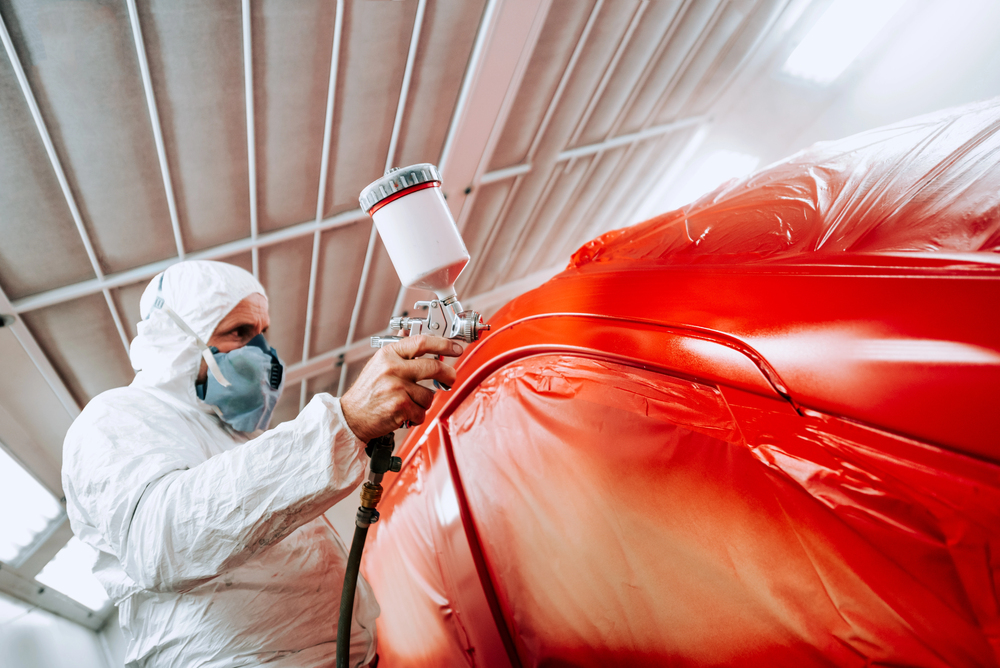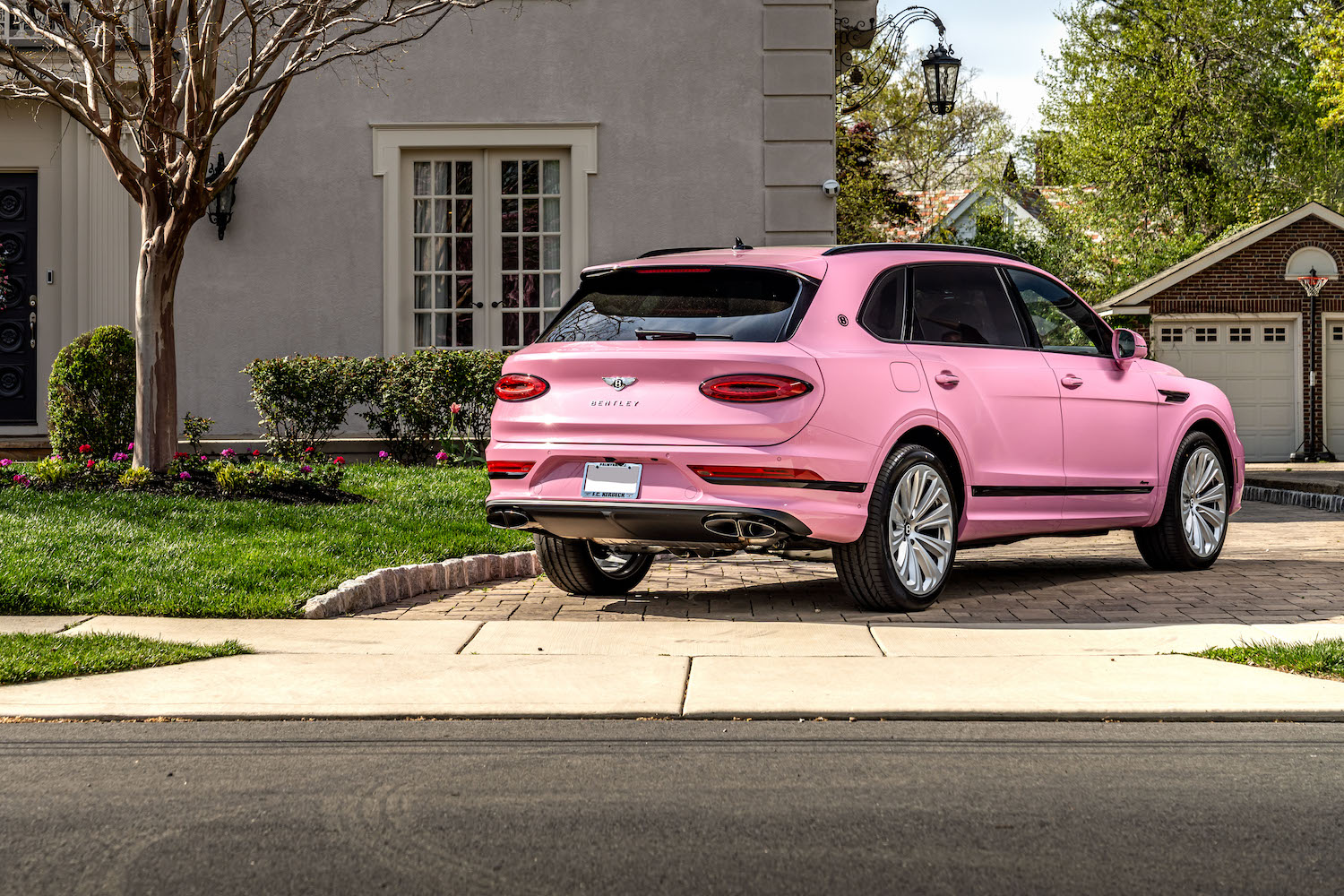Flat Tire Fix: No Spare? No Problem!
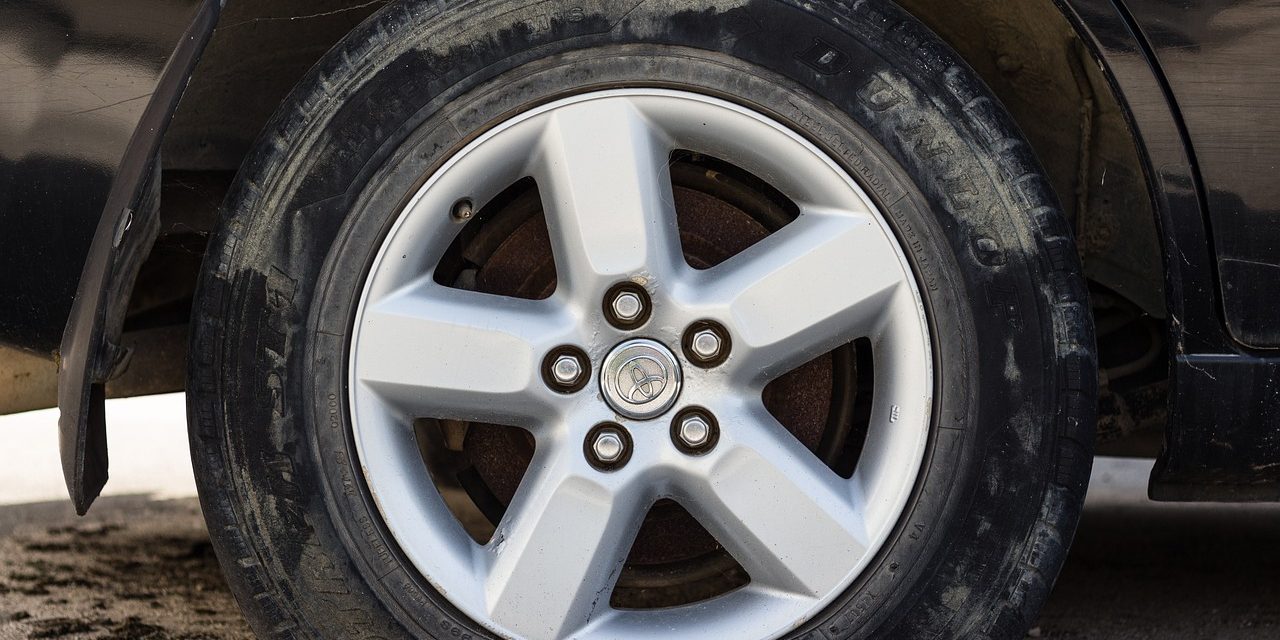
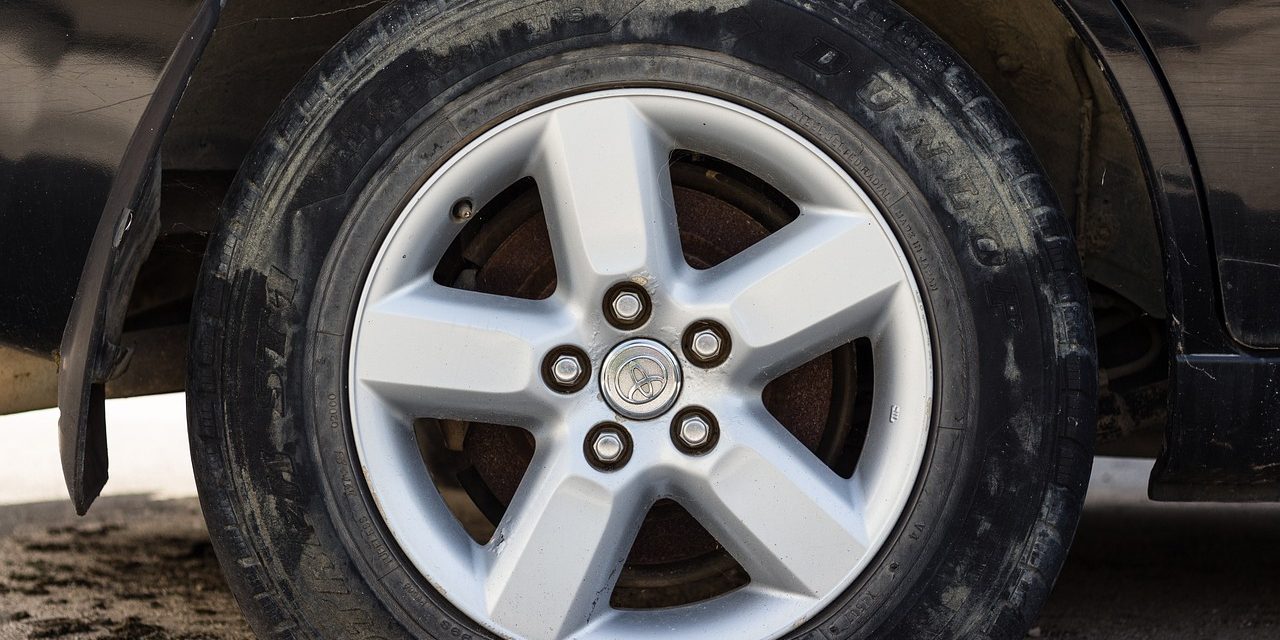
Picture this: you’re cruising down the road, then you hear a loud pop. Your heart sinks as you realize you’ve got a flat tire. Adding to the problem, you don’t have a spare. But don’t worry, we’ve got some solutions for handling a flat without a spare.
We’re going to look at a few emergency fixes for this tough spot. We’ll talk about using a tire repair kit and the benefits of run-flat tires. Plus, we’ll cover why roadside assistance is key and why some cars don’t come with a spare at all. So, let’s dive in and learn how to deal with a flat tire when you’re spare-less.
Using a Tire Repair Kit
A tire repair kit is a great thing to keep in your car. It’s perfect for when you’re stuck with a flat but have no spare. With these kits, you can patch up your tire enough to drive to a shop for a real fix.
Using a tire repair kit is easy. Just stick to these steps:
- Find where the tire is leaking air.
- Use the sharp tool from the kit to make the hole a bit bigger.
- Put the sticky plug into the hole, making sure it goes in all the way.
- Cut off any extra plug so it sits flush with the tire.
But, remember, a tire repair kit is just a quick fix. You need to get your tire checked by a pro soon. The patch is not a permanent solution. And not all tire damages can be fixed this way. Big holes or damage to the tire’s side might be too much for the kit to handle.
So, only use the repair kit to get you to a tire shop. Always let a professional check and fix your tire for good.
Consider Run-Flat Tires
Have you ever had a flat tire and no spare? One choice is run-flat tires. These tires keep the car moving for a short distance after a puncture. They have stronger sides to hold the car up, even with low air. This gives you more control and may be safer. Also, some run-flats warn you when the air gets low.
When a tire blows out, run-flat tires offer a way to keep going safely. They are built to support the car without needing a spare right away. This can save you from trouble or danger on the roadside.
Yet, run-flat tires have limits. Not all punctures can be fixed by them. You must check them often to be sure they work well when you need them. Talking to a tire expert is smart to see if run-flat tires are good for your car and how you drive.
Benefits of Run-Flat Tires:
- Extended mobility after a tire blowout or puncture
- Reinforced sidewalls for added support and stability
- Tire pressure monitoring systems for enhanced safety
- Minimizes the need for a spare tire
Thinking about run-flat tires helps keep your car ready for flats. They work well with normal tire care. So, you can stay calm, knowing they help if you get a flat and there’s no spare.
Now, let’s look at another way to deal with a flat when you don’t have a spare. It’s a tire repair kit.
Contact Roadside Assistance
Imagine this: you have a flat tire and no spare. What do you do? This is when contacting roadside assistance comes in handy. Most car insurance companies have 24-hour help. It means you can call for assistance anytime, anywhere.
Roadside assistance isn’t just for a flat tire. They help with tire replacements, towing, battery jump-starts, and when you’re locked out. This help can save you tons of time and energy. They have the right tools and know-how to fix your problem and get you moving again.
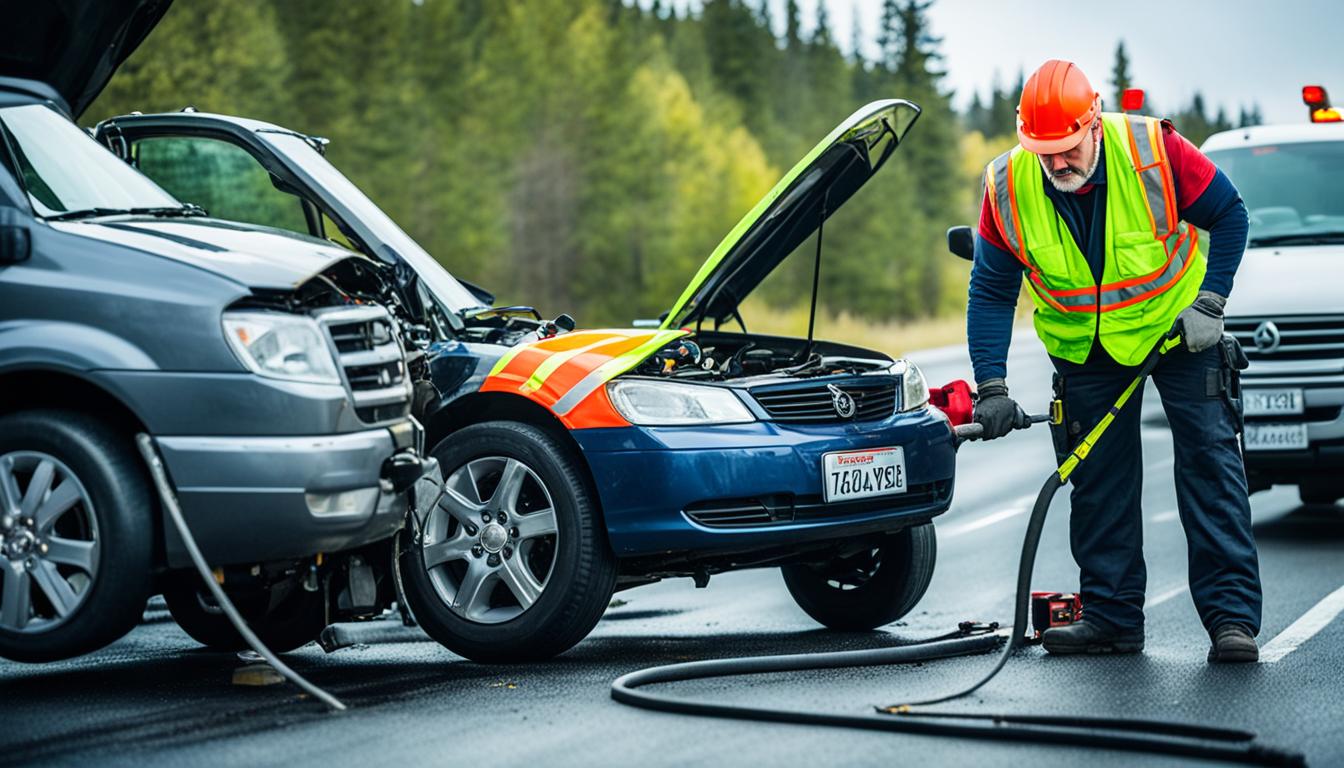
The Shift Away from Supplying Spares
In recent years, car makers have started leaving out spare tires in new vehicles. They do this to help improve how much gas the car uses. Spare tires, while good for emergencies, make the car heavier. This extra weight can make the car use more fuel.
Now, instead of spares, car companies offer other options for dealing with a flat tire. Run-flat tires allow you to drive for a short distance even if they’re flat. They have extra strong sides to keep the car up, even with no air in the tire. This lets you keep going and means you might not need a new tire right away. Some run-flat tires also warn you if they’re losing air.
Car owners can also get tire repair kits. These kits have what you need to fix a flat tire yourself for a little while. With a kit, you can patch a tire and drive to a place that can fix it properly.
Many cars also come with roadside assistance. If you get a flat tire, you can call for help. Someone will come to help you, which can be quicker and easier than changing the tire yourself. This makes not having a spare tire less of a worry for drivers.
Even with these new options, it’s important to keep your tires in good shape. Without a spare, taking care of your tires is more important than ever. Checking the air pressure and the tire’s condition regularly can help avoid flat tires. It also keeps your car running well and safe to drive.
So, keep up with tire care and look into other options besides spares, like run-flats or repair kits. Being ready and informed can help you deal with a flat tire without a spare. Knowing your choices makes handling a flat easier without depending only on a spare tire.
Fixing a Flat Tire Without a Spare
Finding a flat tire with no spare can be worrying. But, there are ways to fix it temporarily and get going again. You can use a puncture sealant or a tire patch kit as quick solutions.
A puncture sealant is great for quick fixes. It goes into the tire through the valve, sealing punctures from the inside. This method lets you keep driving for a bit without losing more air.
Another choice is a tire patch kit, which fixes the tire from outside. It has a patch, adhesive, and tools like a rasp. The patch seals the puncture inside, while the adhesive holds everything together.
But remember, these fixes are not permanent. Be sure to get your tire repaired or replaced by a professional. This ensures your safety and the tire’s long life.

When using a sealant or patch kit, always follow the instructions. The kit’s success depends on the damage’s size and position. For really big holes or damage to the sidewall, these fixes won’t work.
While sealants and patch kits help in a pinch, getting a pro to look at it is smarter. Keeping your tires in good shape avoids many emergencies. Regular checks on tire pressure and tread can save you a lot of trouble.
Conclusion
Getting a flat tire without a spare is tough, but you can manage it with the right know-how. It’s key to have other ways ready when a flat tire hits you. Try carrying a tire repair kit or use run-flat tires. These can help you for a bit until you fix the problem fully. A repair kit lets you stop a tire from leaking, and run-flat tires let you drive a short distance after striking something.
Also, having good roadside assistance at hand makes a huge difference. This team of experts helps out in big emergencies. They know how to deal with all kinds of tire trouble, from changing tires to fixing them. Roadside help is a smart backup if you can’t fix things on your own.
Don’t forget how car companies are leaving out spares from new models. They’re picking run-flats and repair kits instead for better gas mileage. But this means you must take good care of your tires to avoid flats. Keep checking tire pressure and wear, and look out for damages. This can stop flat tires before they happen.
Learning about flat tire fixes makes you ready for trouble. You don’t just have to hope for a spare. Options like tire repair kits, run-flat tires, and getting help from the pros can get you moving again. So, be ready and know your choices.




